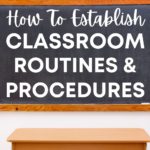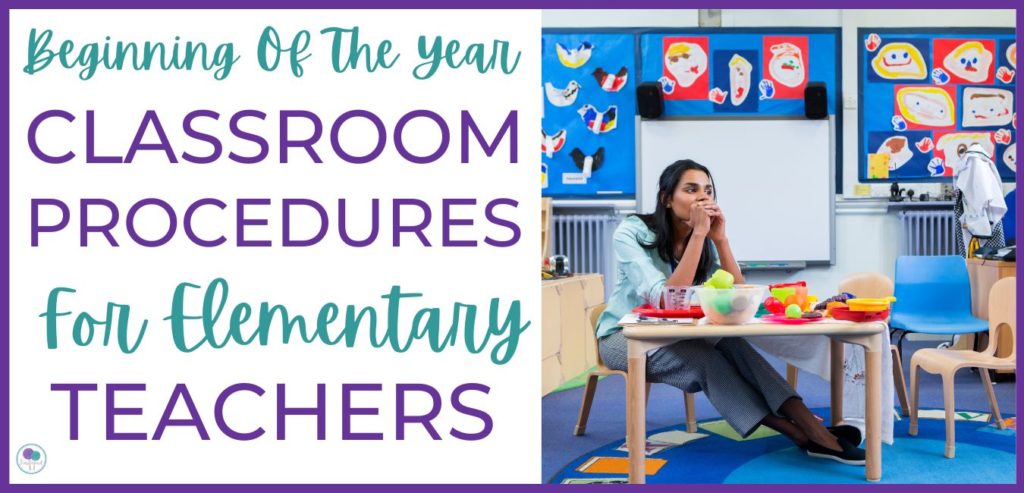
The start of a new school year is an exciting time for both teachers and students. It's essential to begin the year with clear routines and classroom procedures in elementary school. This can help to minimize disruptions and maximize learning time.
What are classroom procedures?
Classroom procedures are routines that are followed on a daily basis. They are designed to help create an effective learning environment by providing structure and predictability. Classroom procedures can include things like rules for lining up, transitions, and the use of materials.
Having a set of routines and procedures in place helps to create a smooth and efficient learning environment by allowing students to know what is expected of them throughout the day. It also allows teachers to maximize instructional time by minimizing disruptions.
When creating classroom procedures, it's important to consider the daily schedule as well as the individual needs of students. By taking these factors into account, teachers can create effective classroom procedures that will help to create a positive and productive learning environment.
Create a daily schedule
One of the most important classroom procedures in elementary school is your daily schedule. Posting the schedule in a visible location helps students know what to expect and can make transitions smoother.
It's also helpful to provide visual cues for each activity in your daily schedule. For example, if there will be a storytime after lunch, you could put up a picture of a book. Similarly, if it is time to line up for recess, you could display a picture of kids playing outside.
While routines and schedules are important, it's also essential to be flexible and adjust as needed. After all, kids are constantly learning and growing, so what works at the beginning of the year may not work as well a few months down the road.
For instance, at the beginning of the year, you may have your students use tubs when they arrive in the morning. This is an easy start to the day that needs little instruction. However, as the year progresses you may want to change this morning routine to include daily journal writing. This can be a great time for students to enjoy some independent writing time.
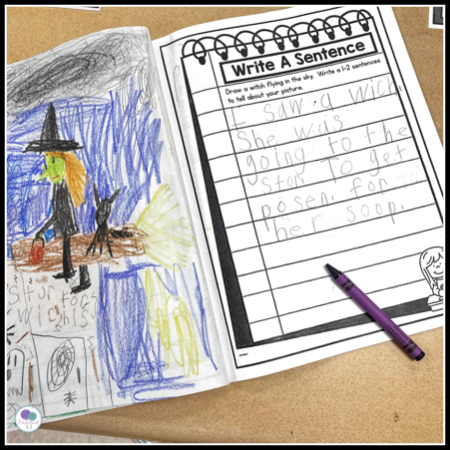
The key is to be observant and responsive to your students' needs. By being proactive and establishing effective classroom procedures, you can set your students up for success all year long.
Post visual reminders
The beginning of the year is an important time for elementary classroom teachers. It's a time to establish routines and procedures, introduce new activities and lessons, and help students make effective transitions.
One of the best ways to do this is to use visuals. Students are more likely to remember and follow directions when they can see them, so schedule charts, behavior charts, and other visual aids should be prominently displayed in the classroom.
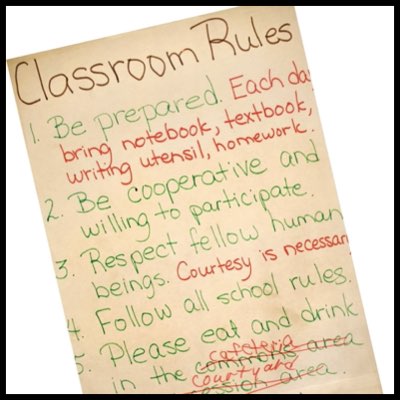
A predictable routine with visual reminders will help kids feel safe and secure, and it will make it easier for them to learn and remember new information.
At the beginning of the year, you will often have students asking how long until they go home. A great visual to use in kindergarten or first grade is a simple daily schedule chart. Use pictures to represent things that you'll do throughout the day such as carpet time, math, reading, lunch, recess, special classes, and dismissal.
Create a simple timeline across your whiteboard with pictures. As you move throughout the day, move a cutout of a child along the timeline. Use a clothespin to clip the child cutout to the activity that you are currently doing. Using a daily timeline like this can help students who are struggling with a long day in school. They can see exactly what they'll be doing before it is time to go back home.
CLICK HERE FOR A FREE CLASSROOM ROUTINES CHECKLIST
Explaining classroom procedures to elementary students.
It's essential to establish daily routines in the classroom from the first day of school. This will help your students feel comfortable and secure, and it will make your job as a teacher much easier. When explaining classroom procedures in elementary school, be sure to be clear and concise. Make sure they understand what is expected of them, and why following the procedures is important.
As stated above, it's helpful to write out the daily routine and post it in the classroom. You could also create a visual chart with pictures or symbols. Most elementary classrooms have a daily morning meeting, where the teacher reviews the daily routines and procedures with the students. This is a great way to start each day on a positive note.

Young students in kindergarten and first grade need lots of practice and review with classroom procedures. You'll need to model and review many times before it will become routine to students. Go over your class rules, lining up procedures and other routines each day until students feel comfortable and know exactly what you expect.
Another important thing to review daily is your bathroom routine. They should know when and how often they are allowed to use the restroom, how to flush the toilet, and how to wash their hands. Students should understand how they should act in the bathroom and what isn't appropriate bathroom behavior such as throwing water, peaking under the stalls, and swinging on the bathroom doors.

At the end of the day, you can again review the daily routine with your students. This will help them to transition smoothly from school to home. By taking the time to explain classroom procedures to your students at the beginning of the year, you will set them up for success all year long.
CLICK HERE FOR A FREE CLASSROOM ROUTINES CHECKLIST
How to communicate classroom procedures to parents
One of the most important things you can do as a teacher is to effectively communicate classroom procedures with parents. By being clear and concise about your morning routine, daily schedule, and expectations for students, you can set the stage for a successful year of teaching. Here are a few tips to help you communicate classroom procedures effectively:
- Define your morning routine and daily schedule in writing. Be sure to include specific details such as when students should arrive at school, where they should go when they first arrive, and what they should do during morning work time. This will help parents understand your expectations and ensure that their child is following your morning routine correctly.
- Communicate with parents regularly. Keep parents updated on their child's progress and let them know about any changes to the daily schedule or morning routine. If you have an effective system for communicating with parents, they'll be more likely to support your efforts in the classroom.
- Make sure parents understand the school policies for drop off and pick up. Give parents a written schedule of times to drop their students off at school and the time to pick them up. If parents know these policies ahead of time it is less likely they'll be late to school or at pick-up time.

What if students don’t follow classroom procedures?
One of the most challenging things about teaching elementary students is getting them to follow classroom procedures. Whether it's students lining up for lunch or transitioning between learning centers, there are a lot of opportunities for students to get off track. The key is to be consistent with your expectations and to provide clear consequences for students who don't follow the rules.
If students are not following your classroom procedures, you may need to take time to review your expectations. It's never a waste of time to review classroom procedures because you're trying to create an effective learning environment. There are a few things you can do to help them get back on track.
For example, you might require students who don't line up in an orderly fashion to be at the end of the line. Or, if students are disruptive during transitions, you might have them miss out on an activity they enjoy at the end of the day. Of course, it's also important to be understanding and flexible when needed. If a student is having a tough day or is having difficulty following a particular procedure, cut them some slack and provide some extra support. At the end of the day, it's all about finding what works best for you and your students.

Tips for getting students to follow classroom procedures
Here are a few specific tips for problem areas such as lining up, bathroom routines, and transitions:
- If students are having trouble lining up, you can remind them of the proper way to line up (e.g., shoulder to shoulder, behind the person in front of them). Ask a group of students to demonstrate how they should line up and then how they shouldn't line up (pushing, shoving, cutting in line, etc).
- If students are having trouble going to the bathroom during class time, you can remind them of the proper procedure. Remind them that they must raise their hand to be excused or use a hand signal. You may need to remind students that bathroom breaks need to be quick and to come back into class silently so they don't disturb your lesson.
- If students are having trouble transitioning between learning centers or activities, you can give them a specific signal or cue (e.g., a clap or ringing a bell) that indicates it is time to transition. You can remind students that transitions should be quick and quiet. This isn't the time to visit with friends, sharpen pencils, etc.
- Finally, if students are having trouble staying focused at the end of the day, you can review your expectations with them (e.g., remaining in their seats until dismissal). By taking these steps, you can help ensure that your students are following your classroom procedures.
Classroom Procedures In Elementary School Are Important
Although these procedures may seem like a lot of extra work in the beginning, they will help your classroom run smoothly and be more organized for the rest of the year. It is important to take some time at the beginning of the year to establish routines and procedures so that everyone knows what is expected of them. This will save you time and energy later on when things get hectic. Have you established any classroom procedures this year? If not, now is a good time to start!
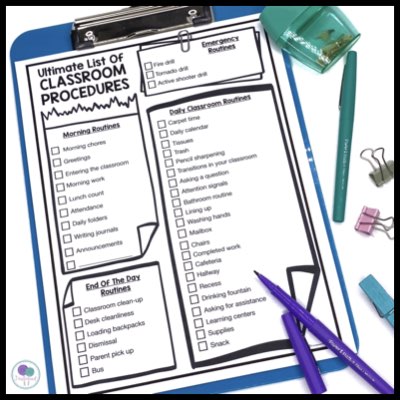
Need more classroom management tips? Check out these posts.
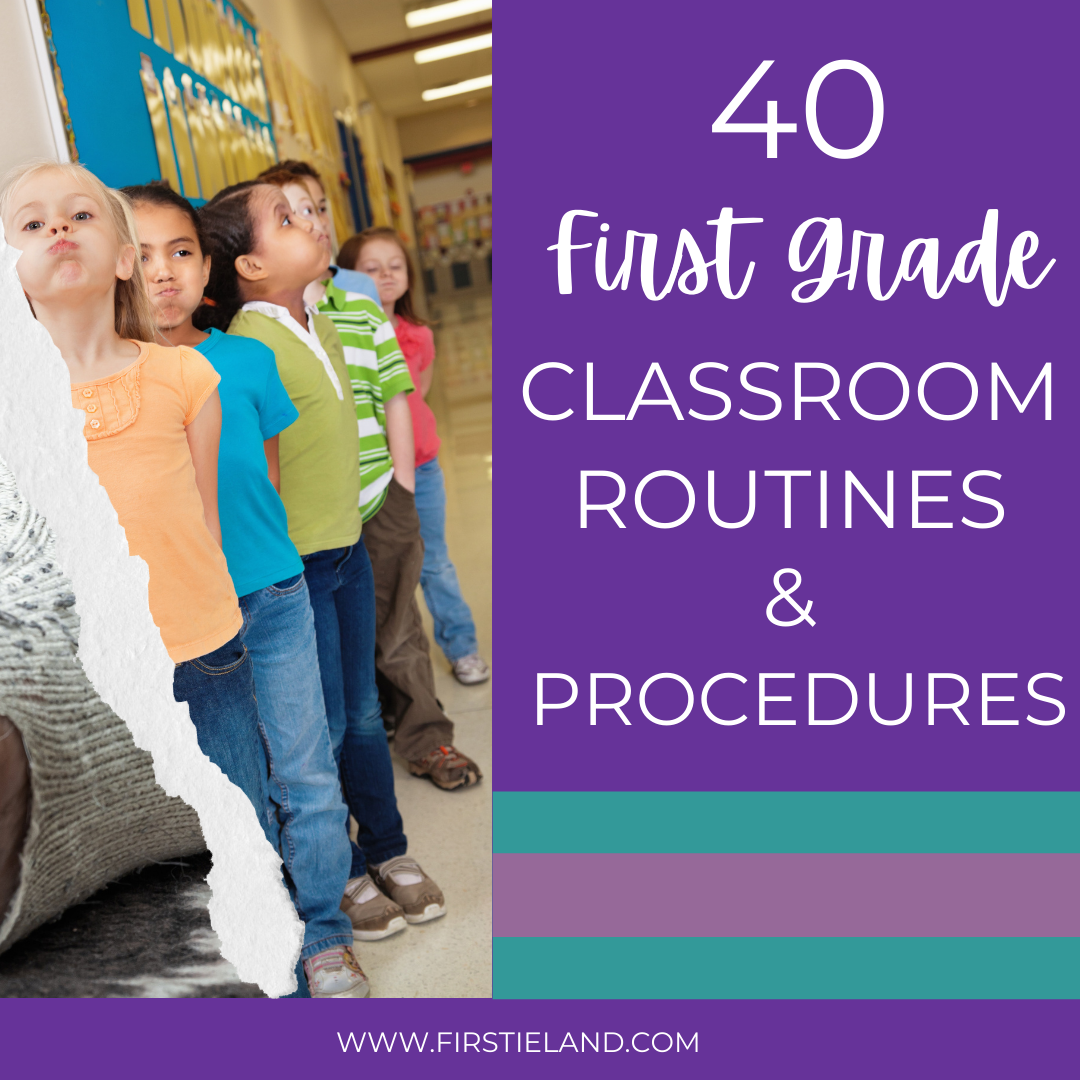
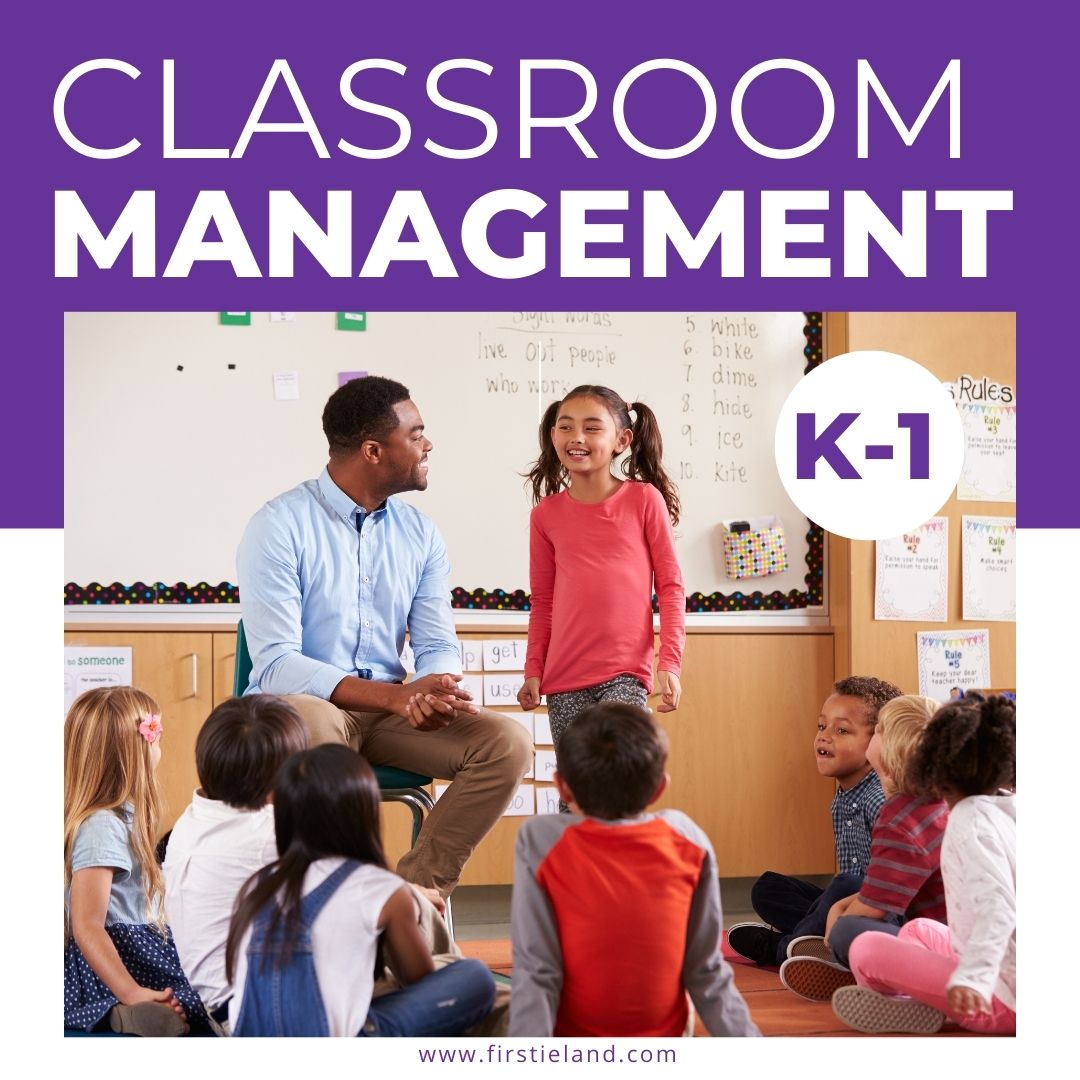

Save these ideas
Take a minute to save these tips to your favorite classroom management Pinterest board so you can remember them later!



